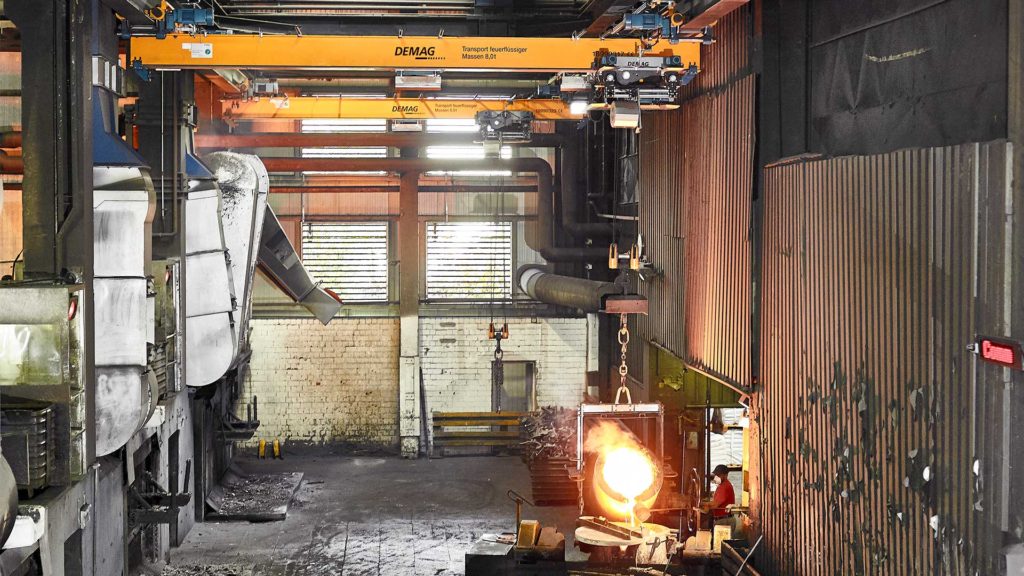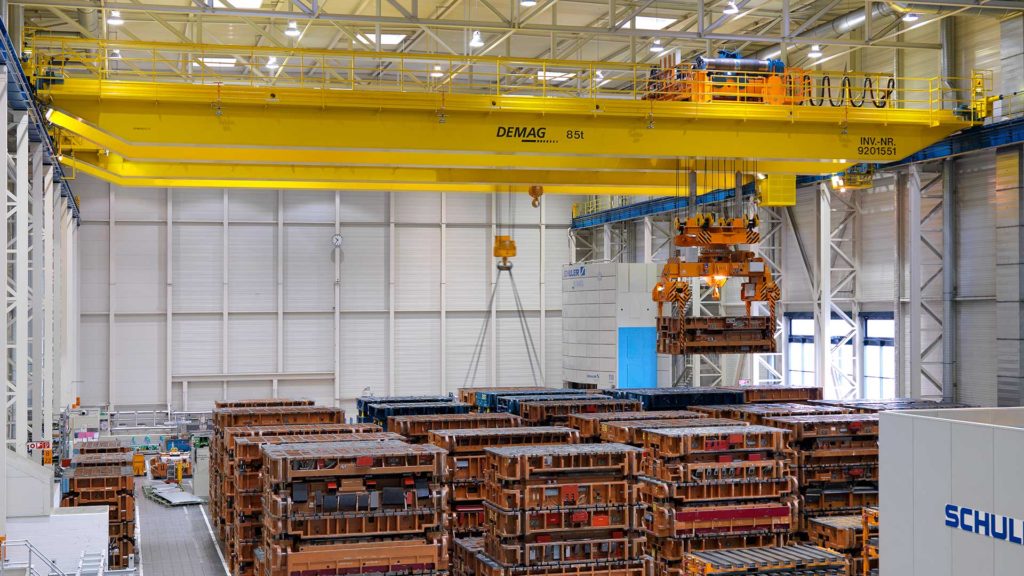Crane and Hoist Duty Classifications at a Glance
- CMAA Classifications: The Crane Manufacturers Association of America (CMAA) defines six crane duty classifications, ranging from Class A (standby/infrequent usage) to Class F (continuous severe service), to ensure cranes match their intended application.
- HMI Standards: The Hoist Manufacturers Institute (HMI) classifies hoists based on load spectrum, daily operating time, and starting frequency, with classifications from H1 (standby/infrequent usage) to H5 (heavy service).
- FEM Standards: The European Materials Handling Federation (FEM) provides duty classifications based on load spectrum and operating time, used by manufacturers designing to European standards.
- ASME Classifications: The American Society of Mechanical Engineers (ASME) defines hoist classifications similar to HMI, focusing on the number of starts per hour and the mean effective load, with ratings from H1 to H5.
- Importance of Proper Classification: Properly classifying cranes and hoists ensures they are suitable for their intended use, enhancing safety, reliability, and efficiency in lifting operations.
There are many specifications to think about when you are getting ready to commit to replacing or adding an overhead crane or hoist in your facility. A critical specification that will need to be defined is duty level or duty cycle. Depending on where you are located geographically, there are different organizations that help standardize the duty of overhead cranes and lifting equipment. To this end, we put together an overview of the common standards and specifications you may see for lifting equipment sold in the United States and Canada.
The duty cycle of a single-girder or double-girder overhead crane or hoist assures the product you purchase will be able to perform the job. Think about it like this. You wouldn’t pull a semi-trailer with your pickup truck. Your pickup truck would experience excessive wear and tear each time the trailer was pulled. Not only that, but it would also struggle to tow the load of the trailer.
When you’re purchasing lifting equipment or an overhead crane in the United States and Canada, there are multiple organizations you may see when shopping equipment. Some manufacturers follow standards organizations within multiple geographies, like Europe and North America. You may work with a manufacturer who calculates both to determine the best product for your application.

CMAA – Crane Manufacturers Association of America
Crane Manufacturers Association of America (CMAA) crane duty classifications are followed in the United States and Canada. A crane manufacturer who follows CMAA specifications will determine the appropriate crane duty classification based on calculations of the number of load cycles using specifications detailed in CMAA 70 and CMAA 74.
As you research to prepare for your crane quote, you will likely see the six CMAA crane classes that are explained below. These are general guidelines to think about as you and your crane manufacturer prepare the quote to meet your needs for overhead cranes, as well as the general requirements for your overhead crane duty classification.
- Class A – This denotes standby or infrequent usage, such as cranes found in power utilities or motor rooms, where precise handling of equipment at slow speeds with long idle periods between lifts occurs.
- Class B – This denotes light service, such as cranes used in repair shops or light warehousing, at slow speeds, with up to five lifts per hour up to maximum rated capacity.
- Class C – This is for moderate service, such as those cranes installed in machine shops, including handling an average of 50% of the rated capacity up to 10 times per hour.
- Class D – This is for denoting heavy service, such as cranes deployed in heavy machine shops, foundries, container yards, and more, where loads of 50% of the rated capacity are handled constantly.
- Class E – This is for severe service, such as cranes found in scrap yards, cement mills, lumber mills, and more, where the crane makes 20 or more lifts per hour at or near its rated capacity.
- Class F – This denotes continuous severe service, including custom-designed specialty cranes, that handle loads approaching the maximum rated capacity non-stop under extreme conditions.
Read more about CMAA specifications and crane duty cycles on the Overhead Lifting blog.

HMI – Hoist Manufacturers Institute
The Hoist Manufacturers Institute (HMI) oversees hoist classifications in the United States and Canada. Hoist duty is calculated based on load spectrum, daily operating time, starting frequency, and more. These calculations then determine the hoist duty classification appropriate for your application.
HMI hoist duty classifications include:
- H1 – Standby or infrequent usage
- H2 – Light service
- H3 – General service, running up to 25% of the work period
- H4 – High volume of heavy loads
- H5 – Heavy service to approach continuous service
In addition, HMI has HMI Certified manufacturers. Manufacturers certify their products meet the standards set out. This makes finding a hoist that meets HMI product specifications and standards easy. Learn more about HMI and the HMI Certified Program and hoist classifications.

FEM – European Materials Handling Federation
Many crane manufacturers design to European standards because they are based in a European country. Demag products meet the European Materials Handling Federation (FEM) standards. FEM is the European Material Handling Federation. Duty classifications of products designed to FEM standards are calculated with input from the load spectrum and operating time. This calculation results in a classification shown below which is applied to the hoist, trolley, and bridge motor use.
FEM duty classifications for hoists trolleys, and bridge motors include:
- 1Dm/ 1Cm – Standby or infrequent usage
- 1Bm – Light service
- 1Am – Light to medium service
- 2m – Medium to heavy service
- 3m – Heavy service
- 4m/5m – Severe service
Learn more about FEM and the standards developed.

ASME – The American Society of Mechanical Engineers
Primarily used in the United States and Canada, the American Society of Mechanical Engineers (ASME) develops standards applicable to the hoist marked in typical U.S. capacities. ASME standards are approved by another organization, the American National Standards Institute (ANSI). To determine the hoist duty classification, ASME calculates the maximum number of starts per hour, maximum on-time minutes per hour, and the mean effective load. Hoist ratings include:
- H1 – Standby or infrequent usage
- H2 – Light service
- H3 – General service, running up to 25% of the work period
- H4 – High volume of heavy loads
- H5 – Heavy service to approach continuous service
Learn more about ASME standards.
Overhead crane duty classification and hoist classification are critical calculations for your lifting project. There are different organizations that set standards and specifications to match the product with your requirements. Assuring your lifting equipment is sized properly makes your lifting operations safer, more reliable, and more efficient. Working with an experienced crane manufacturer or dealer will assure your project requirements will be met.
